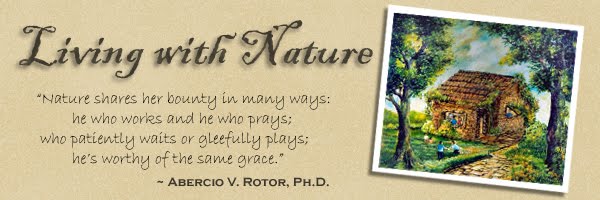Living with Nature School on Blog [avrotor.blogspot.com]
Paaralang Bayan sa Himpapawid (People's School-on-Air) with Ms Melly C Tenorio
738 DZRB AM Band, 8 to 9 evening class Monday to Friday
Iimagine if there were no banana leaves to make these favorite delicacies: suman, tupig, bucayo, bibingka, patupat, puto, tinubong, biko-biko,
and the like. We would be missing their characteristic flavor and
aroma, and their indigenous trade mark. So with a lot of recipes like paksiw na isda, lechon, and
rice cooked with banana leaves lining. Banana leaves have natural wax
coating which aid in keeping the taste and aroma of food, while
protecting it from harmful microbes.
Paksiw with banana leaves
In the elementary, we used
banana leaves as floor polish. The wax coating makes wooden floors as
shiny as any commercial floor wax sans the smell of turpentine. Banana
leaves when wilted under fire exude a pleasant smell. When ironing
clothes use banana leaves on the iron tray. It makes ironing cleaner and
smoother, and it imparts a pleasant, clean smell to clothes and fabric.This is how to prepare banana leaf wrapper.
1. Select the wild seeded variety (botolan or balayang Ilk.) and the tall saba variety. Other varieties may also be used.
2.
Get the newly mature leaves. Leave half of the leaf to allow plant to
recover. Regulate the harvesting of young leaves as this will affect the
productivity of the plant.
3. Wilt the gathered leaves by
passing singeing the leaves over fire or live charcoal until they are
limp and oily. Avoid smoky flame as this will discolor the leaves and
impart a smoky smell (napanu-os Ilk).
5. Cut wilted leaves with desired size, shape and design. Arrange to enhance presentation and native ambiance..
Keep
a hill of saba variety growing in your the backyard. It grows and
multiplies fast with little care. While you wait for the fruit to form
and mature, you have banana blossom, too. And banana leaves at any
time.~


No comments:
Post a Comment